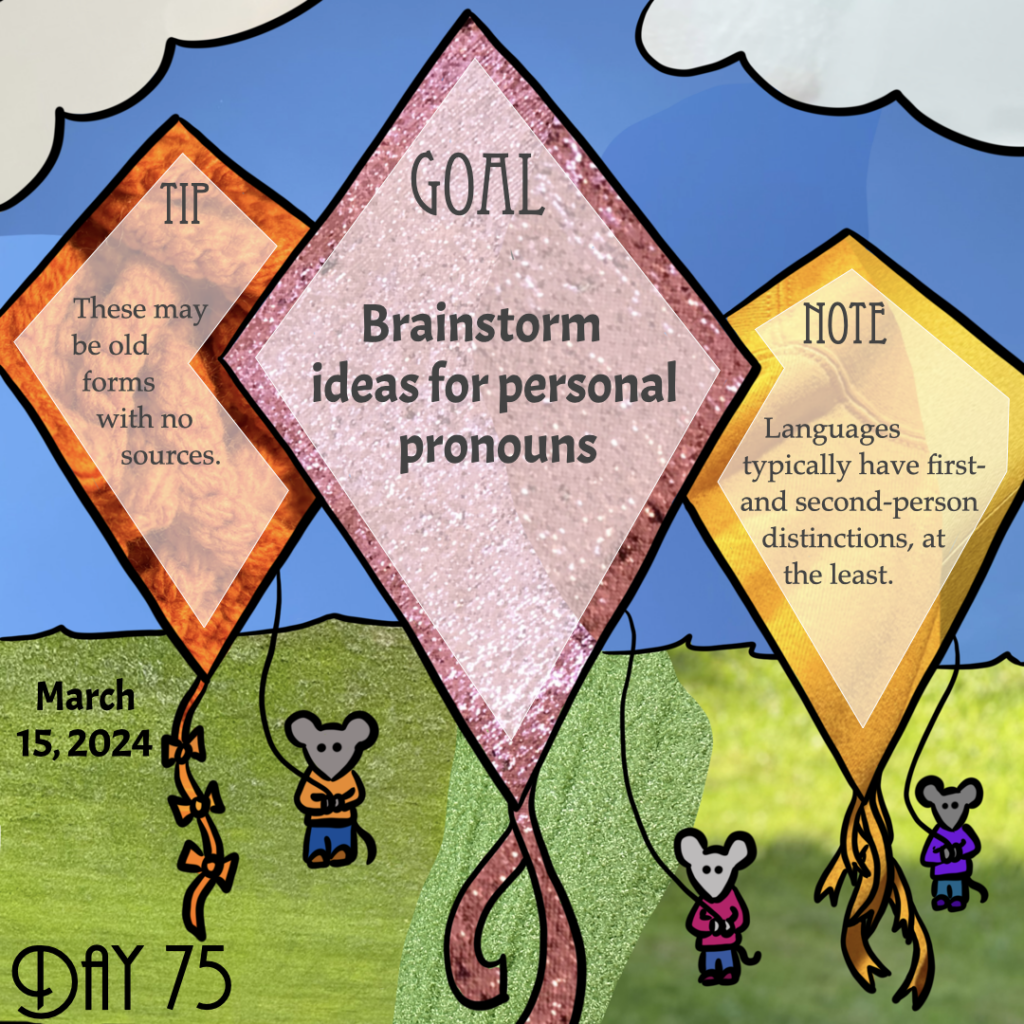
Goal: Brainstorm ideas for personal pronouns
Note: Languages typically have first- and second-person distinctions, at the least.
Tip: These may be old forms with no sources.
Work focus: Learn/Brainstorm/Try
Personal pronouns is a series of pronouns that indicate grammatical person. The table below describes the basic referents of personal pronouns for singular and plural forms—that doesn’t mean you need different forms for singular and plural pronouns (not all languages do), and that doesn’t mean this system would have enough forms for your language (e.g. you may also need a dual form, you may need different class forms for the third-person pronouns, and so on).
| Singular | Plural | |
| First-person | speaker | speaker + others |
| Second-person | addressee | multiple addressees |
| Third-person | someone or something not participating in the current conversation | multiple someones or somethings not participating in the current conversation |
At minimum, I encourage you to include distinct first- and second-person pronoun forms. The smallest pronoun systems in natlangs have a way to distinguish the speaker and addressee. However, not all languages have a distinct third-person pronoun form—if they don’t, they typically use another grammatical word, such as a demonstrative pronoun, to fill that need.
If you want third-person pronoun forms, you should incorporate at least as many inflectional distinctions as you have for your nouns (e.g. number, class, case). The forms may be suppletive in those inflections (i.e. unpredictable), or they may be predictable, following the same patterns for marking inflections on your nouns. Also, while you can create lexical sources to grammaticalize your pronoun forms, you may also choose to create pronoun forms as they are. In other words, you could decide these pronoun forms are so old that they simply existed in the language since the language’s origins.
As a reminder, pronouns often retain more grammatical forms than nouns, so you could even consider adding inflections that do not occur with nouns, such as having dual pronoun forms without having dual forms marked on the nouns (the assumption would be the dual number marking was simply lost for the nouns during your language’s history).
Another option to consider for you pronoun system is formality, especially formality in your second-person forms (the second-person pronouns are generally more prone to formal distinctions). If it makes sense for your speakers and their world to have a formal distinction, then you need to start building one with the pronoun system.
